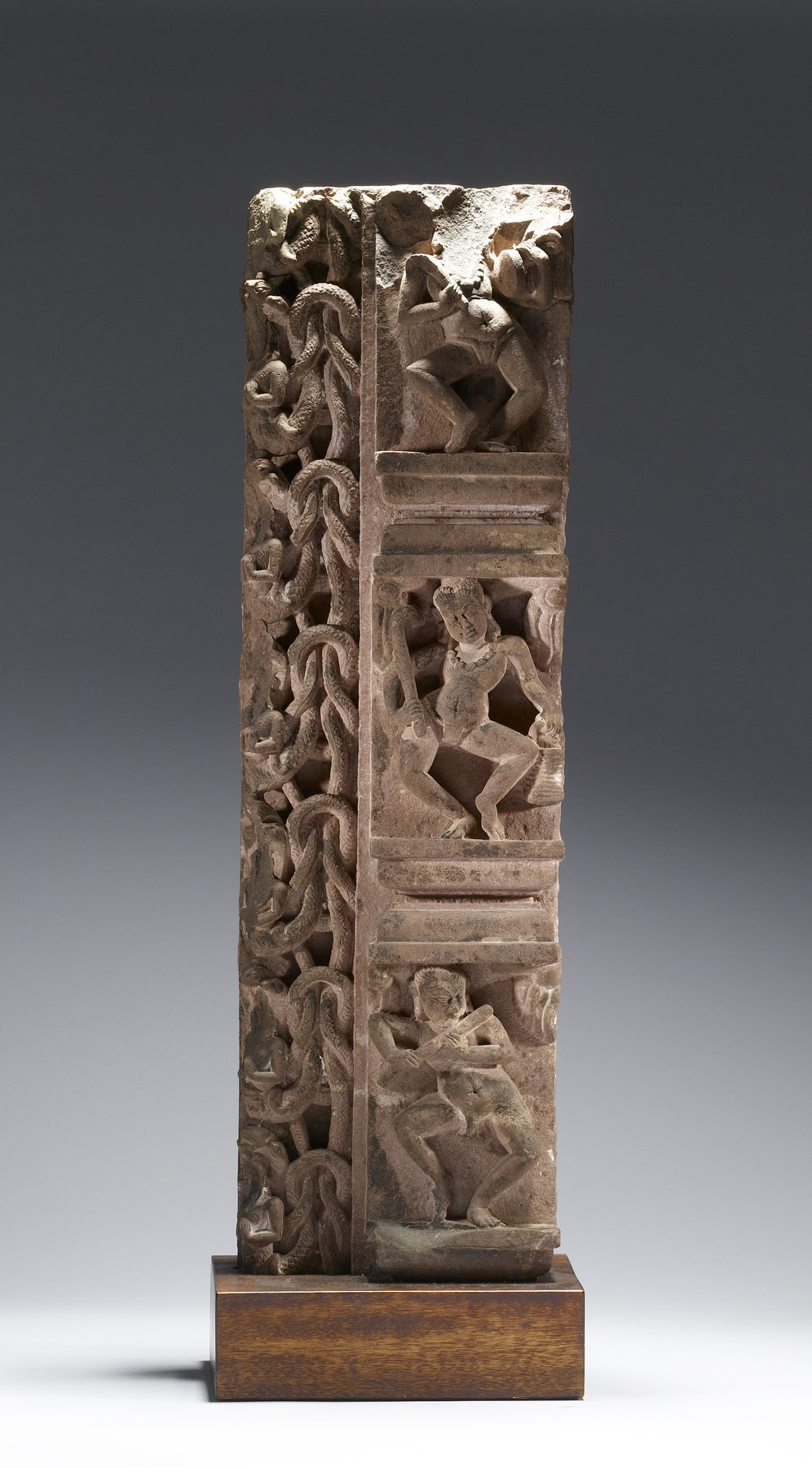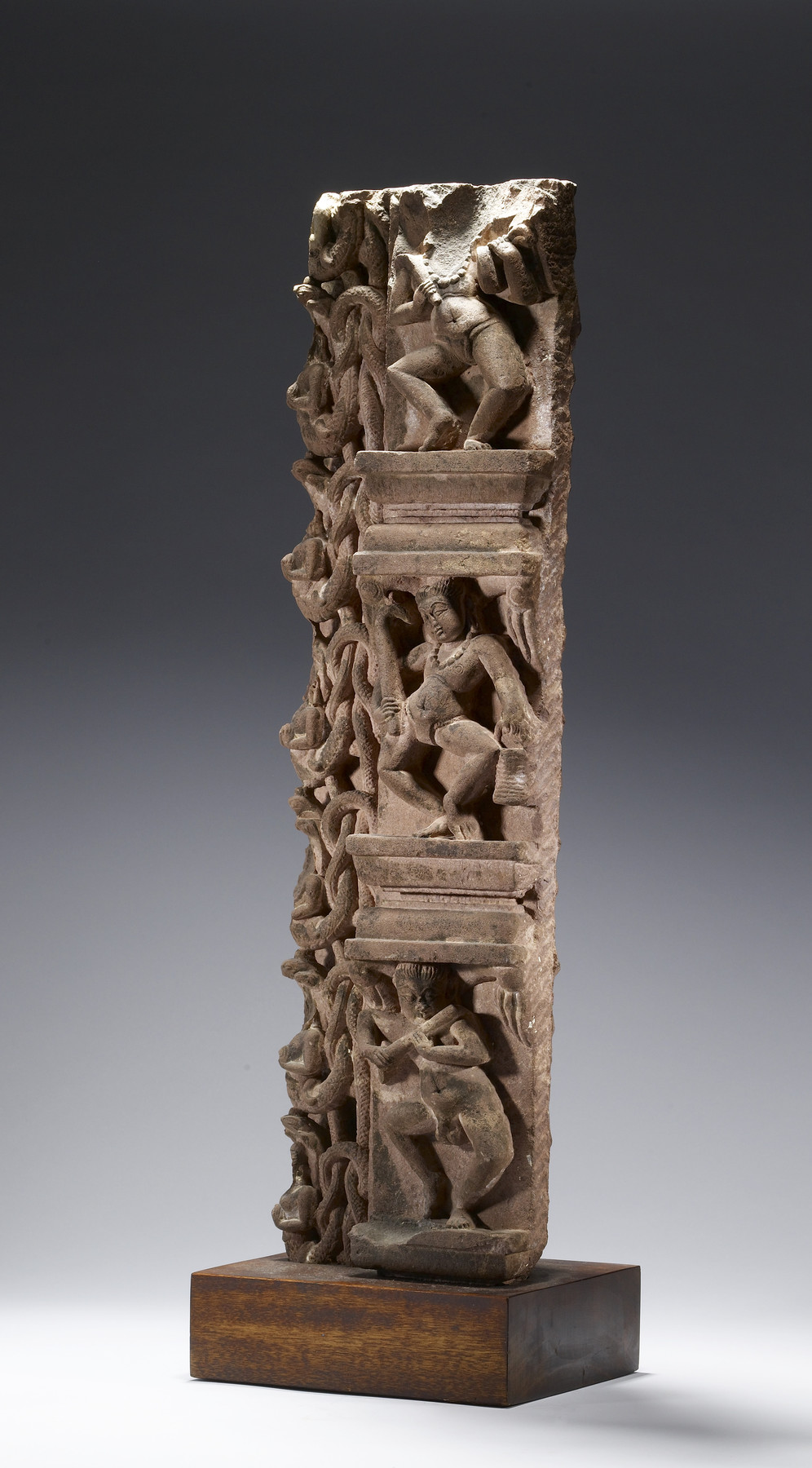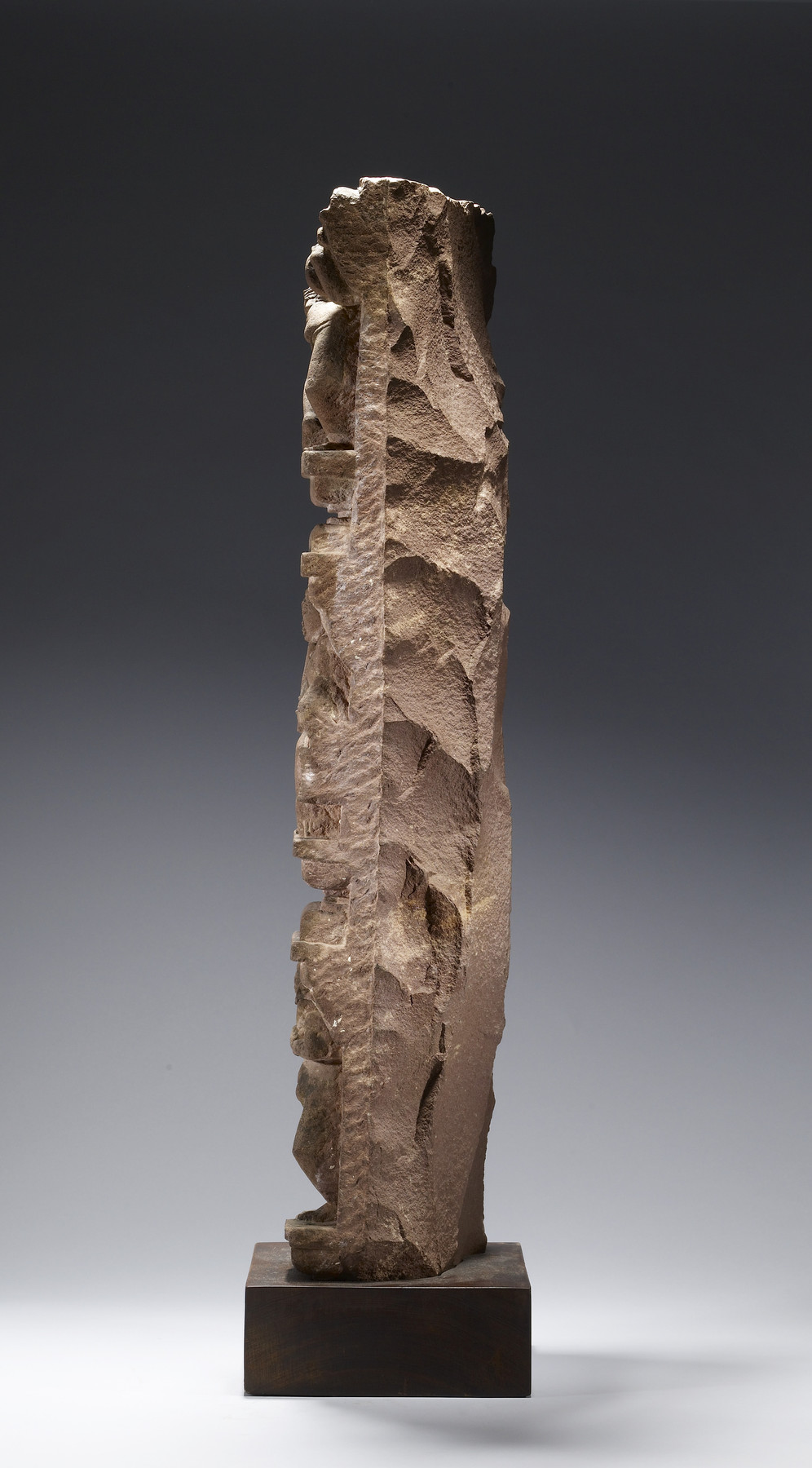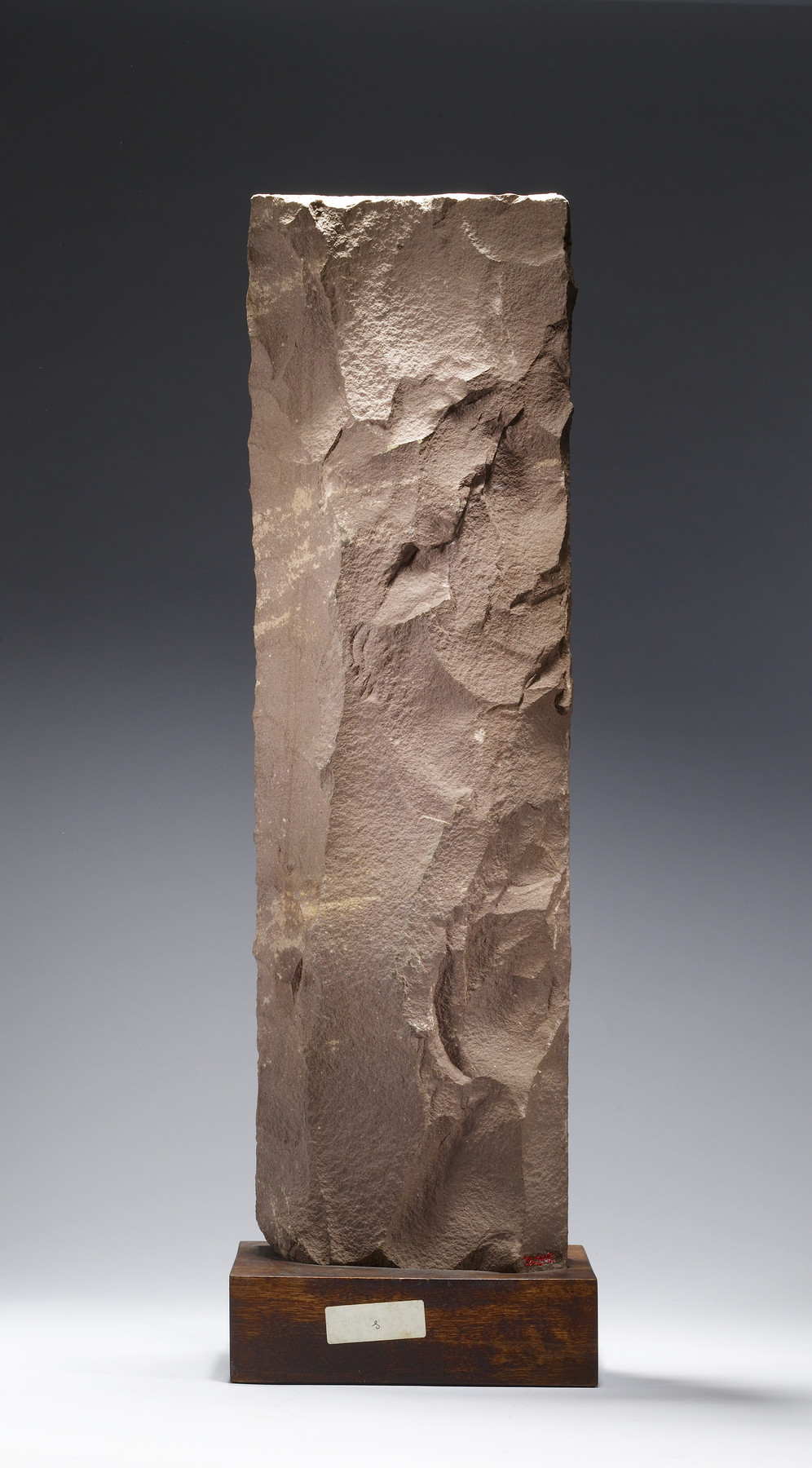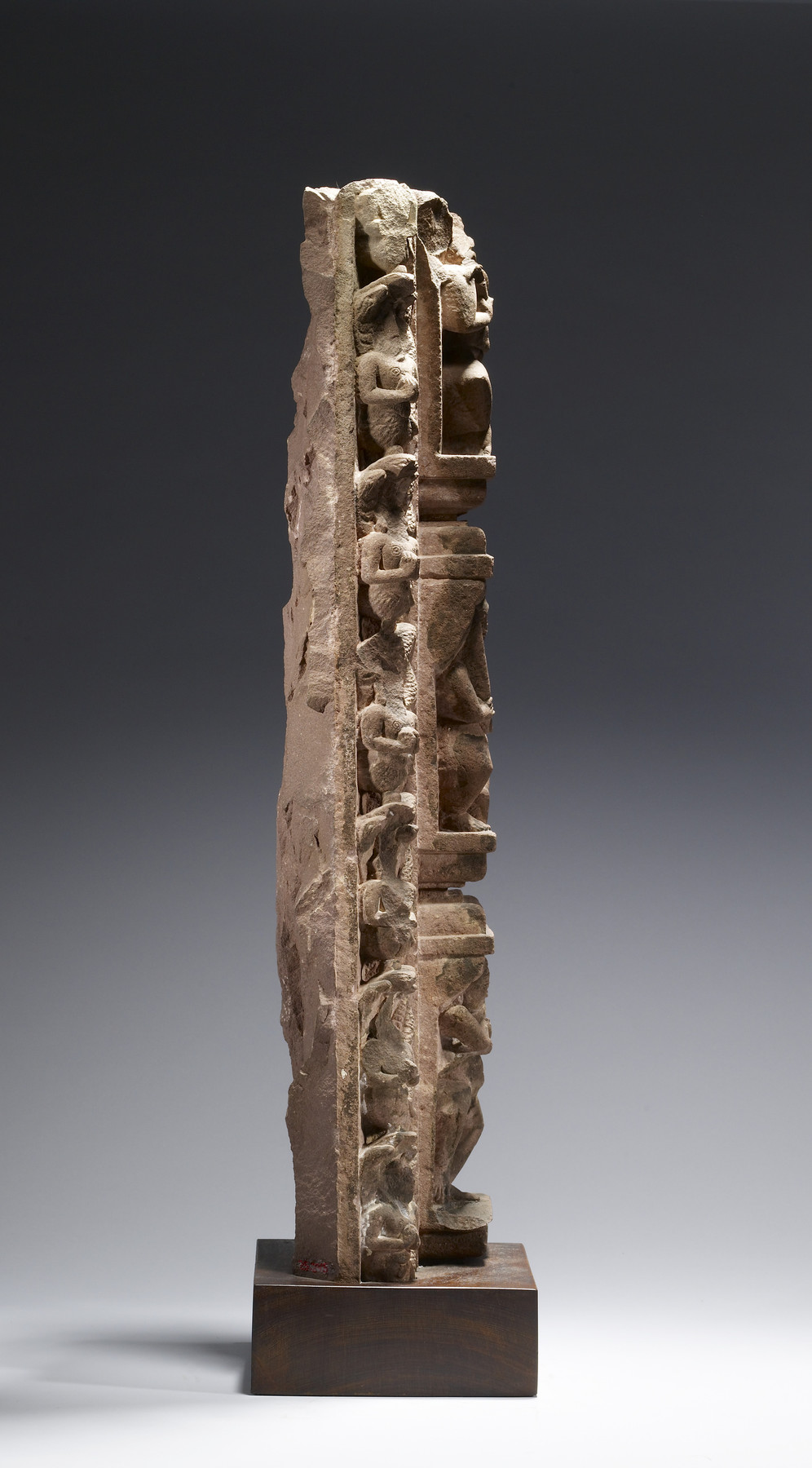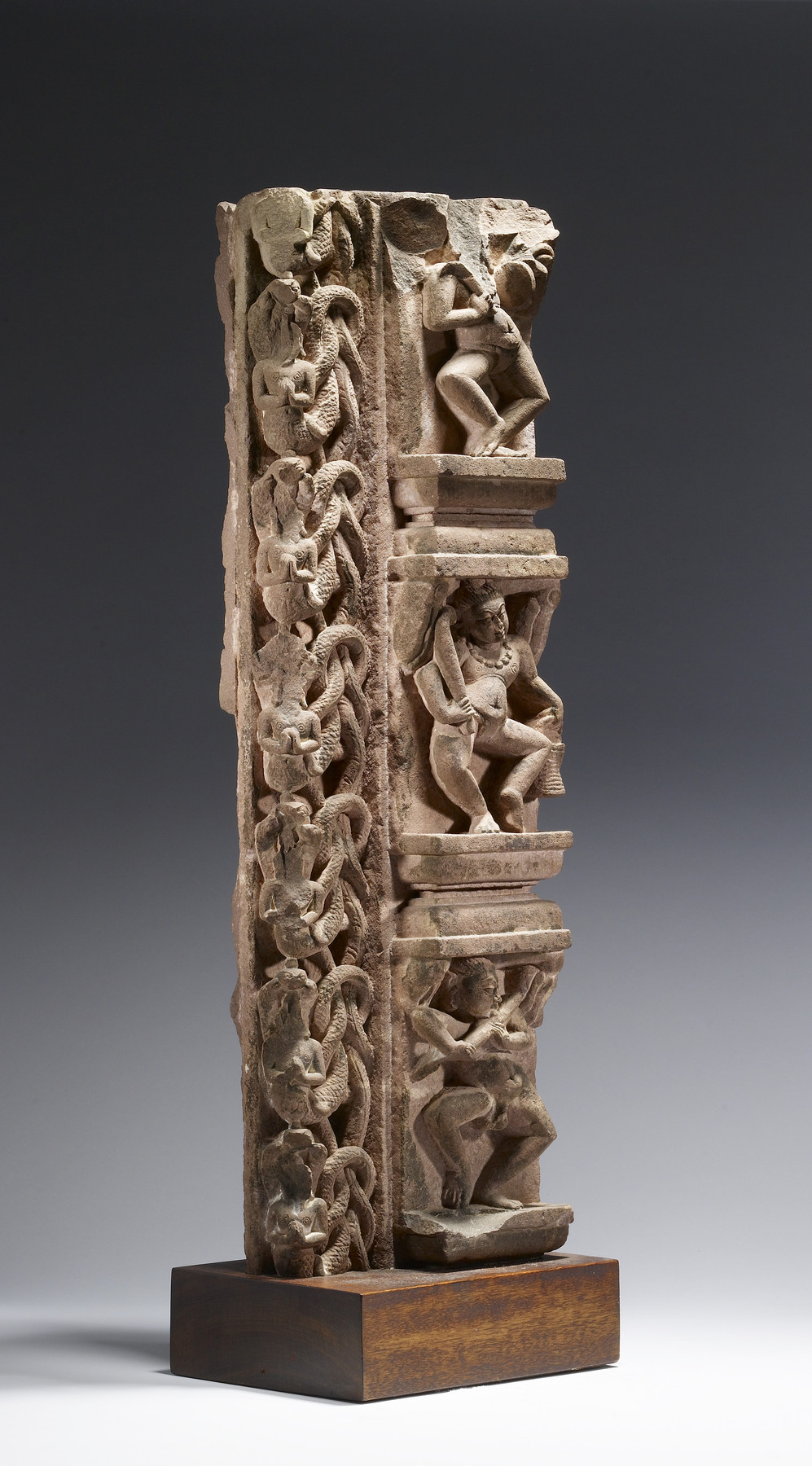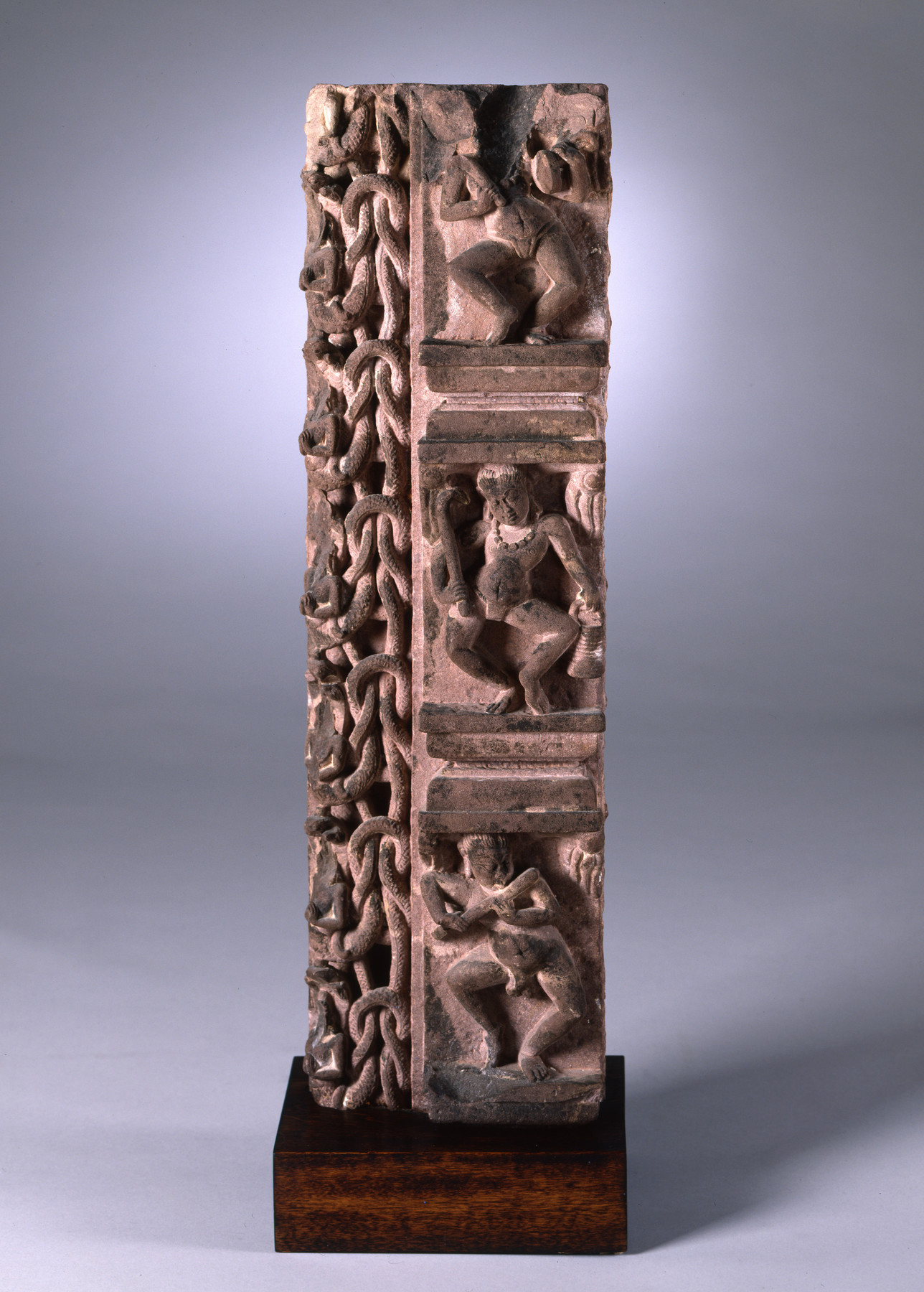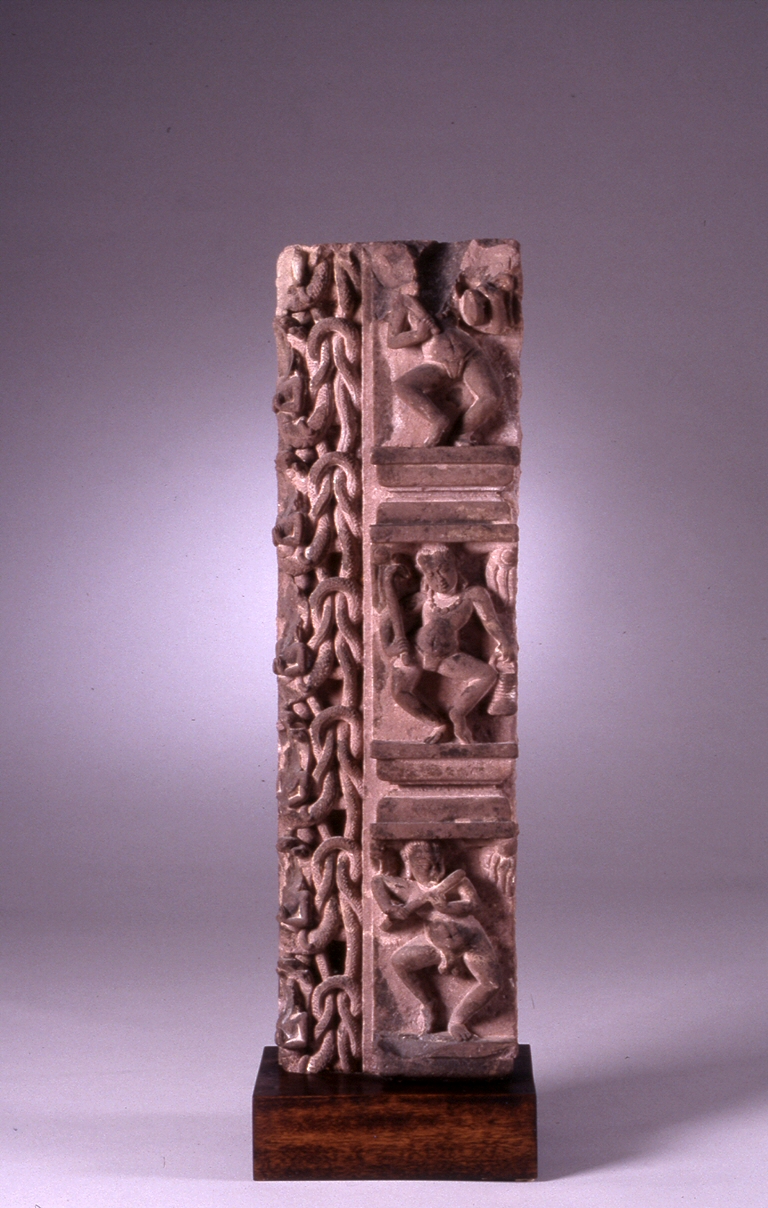Doorjamb with Dancing Figures and Serpents
(India, Nepal, and Tibet)
This panel once formed part of the right doorjamb (the vertical part of a doorway) framing the entrance into a temple or the sanctum of a temple. Three dancing figures reflect the activities of performers who offer dance and music to the temple’s god or goddess. On the inner part of the doorjamb, which would have been on the visitor’s right side, "nagas"—sacred serpents, represented with human heads and torsos on a snake’s body—join their hands in respectful greeting, a gesture that both welcomes visitors to the temple and praises the deity enshrined within.
Provenance
Provenance (from the French provenir, 'to come from/forth') is the chronology of the ownership, custody, or location of a historical object. Learn more about provenance at the Walters.
Rudi Oriental Arts, New York; purchasd by John and Berthe Ford, Baltimore, 1966; given to Walters Art Museum, 2003.
Exhibitions
| 2001-2003 | Desire and Devotion: Art from India, Nepal, and Tibet in the John and Berthe Ford Collection. The Walters Art Museum, Baltimore; Santa Barbara Museum of Art, Santa Barbara; Albuquerque Museum, Albuquerque; Birmingham Museum of Art, Birmingham; Hong Kong Museum of Art, Hong Kong. |
Conservation
| Date | Description | Narrative |
|---|---|---|
| 6/30/2004 | Treatment | cleaned |
Geographies
India, Madhya Pradesh
(Place of Origin)
India, Uttar Pradesh (Place of Origin)
Measurements
H: 29 1/4 × W: 9 × D: 6 1/2 in. (74.3 × 22.86 × 16.51 cm); Base H: 3 × W: 9 3/4 × D: 7 1/2 in. (7.62 × 24.77 × 19.05 cm)
Credit Line
Gift of John and Berthe Ford, 2003
Accession Number
In libraries, galleries, museums, and archives, an accession number is a unique identifier assigned to each object in the collection.
In libraries, galleries, museums, and archives, an accession number is a unique identifier assigned to each object in the collection.
25.245

